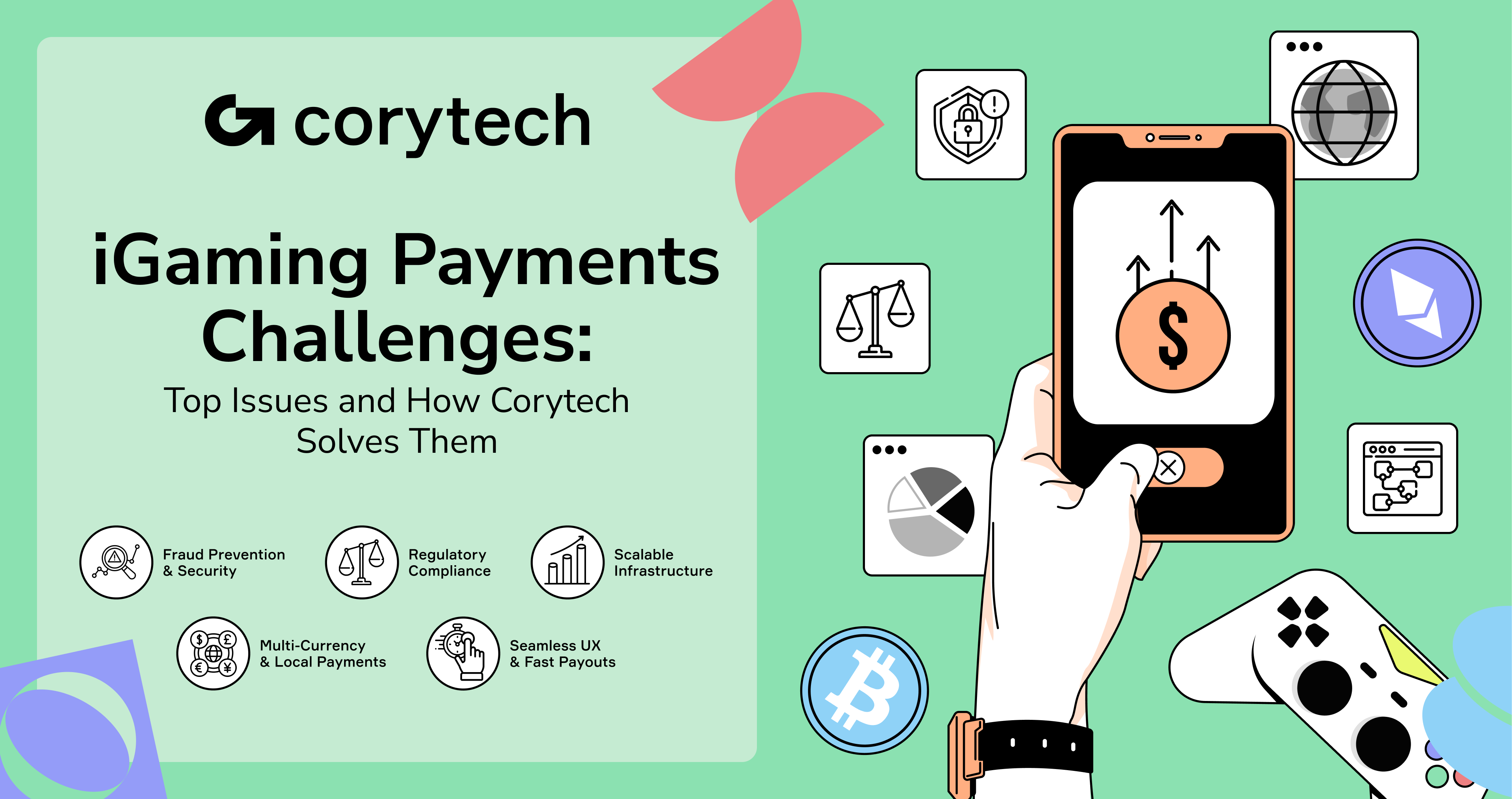Today, the security of online payments is not just a technical necessity—it’s a business imperative. As high-risk industries like iGaming and eSports experience explosive growth, they have also become prime targets for cybercriminals. In 2024 alone, the global online payment fraud losses reached $48 billion, with the iGaming sector accounting for a significant portion due to high transaction volumes and complex cross-border payments. Meanwhile, eSports platforms have seen a 20% rise in phishing attempts targeting digital wallets and user accounts. These evolving threats demand a proactive approach to payment security and regulatory compliance.
Online payment security refers to the protocols, technologies, and regulations that protect financial transactions over the internet, ensuring data confidentiality, integrity, and user trust across every touchpoint.

The Evolving Landscape of Online Payment Security
Current Threats and Challenges
Cyber threats targeting online payment systems are growing in sophistication and scale. Phishing attacks now use AI-generated content to mimic legitimate platforms with unnerving accuracy, luring users into exposing sensitive credentials. Meanwhile, ransomware has evolved into a business model, with attackers targeting payment infrastructures and demanding cryptocurrency-based ransoms. Payment systems in high-risk industries are especially vulnerable due to high traffic, multi-channel integration, and often outdated legacy security systems.
These threats result in real-world consequences: delayed transactions, reputational damage, compliance penalties, and lost revenue. For example, a coordinated credential-stuffing attack on an eSports platform in 2023 led to thousands of compromised user accounts and $1.2 million in fraudulent withdrawals. Businesses must now contend not only with securing endpoints but with building adaptive, resilient architectures that preempt attacks before they occur.
Impact of Emerging Technologies
New technologies are reshaping how payment security is enforced. Artificial intelligence and machine learning are at the forefront, enabling platforms to detect fraudulent behaviors in real-time by analyzing historical user patterns, flagging anomalies before they escalate. These technologies continuously adapt, making it harder for fraudsters to replicate past successful attacks.
Blockchain is also contributing to payment transparency and integrity. Its decentralized nature makes transaction data immutable and tamper-proof, which is particularly valuable for high-risk sectors managing sensitive or cross-border payments. On the frontend, biometric authentication—like facial recognition and fingerprint scanning—is becoming a norm, replacing easily breached passwords with unique biological identifiers. This adds a critical layer of protection at the point of user interaction. Additionally, tokenization replaces sensitive payment information with unique tokens that have no intrinsic value if compromised, further enhancing security.
.png)
Compliance Regulations in 2023–2024
Key Regulations
As cyber threats grow, so does the complexity of compliance frameworks that govern digital transactions. For businesses operating in high-risk industries, staying compliant is both a legal requirement and a competitive advantage. Key regulations include:
- GDPR (General Data Protection Regulation): Enforces strict rules on data privacy and protection for EU citizens. Payment providers must ensure secure handling of user data and obtain explicit consent for processing.
- PSD2 (Payment Services Directive 2): Mandates Strong Customer Authentication (SCA) for European transactions, requiring two-factor authentication to verify payments.
- PCI DSS (Payment Card Industry Data Security Standard): A global standard for organizations that handle credit card transactions, ensuring secure storage, processing, and transmission of cardholder data. PCI compliance refers to a set of 12 security standards that businesses must use when accepting credit card payments. The PCI Security Standards Council, an independent body created by card networks, manages these compliance standards.
In 2023, the industry also began adapting to PCI Software Security Framework (SSF)—the successor to PA-DSS. This new framework accounts for the dynamic and modular nature of modern software development. Additionally, PCI DSS v4.0, launched in 2022 with a transition deadline in March 2025, introduces a “customized approach,” giving businesses more flexibility in how they meet security objectives—without compromising compliance. Every business that processes credit card transactions must adhere to PCI compliance standards, regardless of the number of transactions they handle.
Impact of Regulations on Businesses
Complying with these evolving standards requires considerable time, resources, and technical upgrades—especially for businesses managing large transaction volumes across multiple regions. For example, implementing SCA in line with PSD2 can complicate user experience if not properly streamlined, potentially increasing cart abandonment rates. However, failing to comply with PCI standards can result in hefty fines from card networks, making compliance a critical priority for businesses.
However, the benefits outweigh the costs. Compliance builds customer trust, opens doors to international markets, and significantly reduces the risk of legal fines or data breaches. Businesses that proactively align with these frameworks not only protect their operations but also position themselves as secure and reliable partners—an essential edge in high-risk industries like iGaming and eSports. Card networks enforce PCI compliance as part of their agreements with merchants and service providers, further emphasizing its importance.
.png)
Innovations in Online Payment Security
Advanced Fraud Detection Systems
The battle against payment fraud is increasingly fought with intelligence—artificial intelligence. Modern fraud detection systems use real-time data analysis and predictive algorithms to spot suspicious activities before they escalate. These systems analyze thousands of behavioral and transactional data points—such as device fingerprinting, geolocation mismatches, and spending anomalies—to flag and block high-risk transactions automatically. Fraud detection systems rely on machine learning algorithms to spot unusual behavior and suspicious activity, making them indispensable in combating fraud.
Corytech’s Fraud Guard is a prime example of this innovation in action. It proactively identifies fraud patterns across multiple channels and platforms, giving businesses a layered, intelligent shield against payment fraud. By offering both real-time detection and flexible risk rules, Fraud Guard helps companies stay secure without sacrificing customer experience.
Secure Payment Gateways
The payment gateway is the critical link between merchants and payment processors—making it a common target for cybercriminals. Modern secure gateways now employ tokenization, SSL encryption, and advanced 3-D Secure protocols to ensure every transaction is verified, encrypted, and protected end to end.
Corytech’s payment orchestration suite offers tailored, high-security gateway solutions that are compliant, scalable, and customizable. Whether you're handling recurring payments, multi-currency transactions, or high-volume flows typical of iGaming or eSports, Corytech’s platform ensures seamless integration with anti-fraud systems and regulatory compliance from the ground up.
End-to-End Encryption
End-to-end encryption (E2EE) is one of the most effective ways to protect sensitive payment data. It ensures that information is encrypted on the sender’s device and only decrypted once it reaches the authorized recipient, making it nearly impossible for attackers to intercept or manipulate transaction data during transmission. Businesses widely employ encryption protocols such as Secure Sockets Layer (SSL) and Transport Layer Security (TLS) to secure data transmission, further safeguarding sensitive information.
In the context of online payments, E2EE is essential for safeguarding customer data, especially when transactions occur across unsecured networks or multiple platforms. As attacks like man-in-the-middle (MITM) become more advanced, E2EE serves as a vital barrier that businesses cannot afford to overlook.
.png)
Best Practices for Ensuring Payment Security
For Customers
Consumers play a critical role in maintaining the integrity of online payment systems. Simple but effective practices can go a long way in preventing fraud. These include:
- Using strong, unique passwords and enabling multi-factor authentication (MFA).
- Avoiding public Wi-Fi when making online payments.
- Regularly monitoring bank statements and transaction alerts for suspicious activity.
- Shopping only on trusted websites with HTTPS encryption.
Multi-factor authentication (MFA) adds an extra layer of security by requiring users to provide multiple forms of verification before completing a transaction.
Additionally, staying informed about phishing techniques and scams is crucial, especially for gamers and online players who often deal with in-game purchases and digital wallets.
For Businesses
For companies operating in high-risk industries, security must be embedded into every layer of their payment infrastructure. Recommended strategies include:
- Implementing AI-powered fraud detection tools like Corytech’s Fraud Guard to analyze transactions in real time.
- Using tokenization and end-to-end encryption to minimize exposure of sensitive payment data.
- Complying with regulations like PCI DSS, GDPR, and PSD2—not just to avoid penalties but to build customer trust.
- Conducting regular security audits and penetration testing to identify vulnerabilities before attackers do.
- Training employees on cybersecurity awareness to reduce the risk of social engineering attacks.
Detection tools often include reporting and analytics to track blocked transactions and evaluate payment security effectiveness, making them indispensable in a robust security strategy.
By combining advanced technology with proactive risk management, businesses can significantly reduce the likelihood of breaches while ensuring a smoother user experience.
.png)
The Future of Online Payment Security
Emerging Trends in High-Risk Payment Security
As payment technologies evolve, so do the tactics used by cybercriminals. But the future looks promising for businesses that stay ahead of the curve. Tokenization—the process of replacing sensitive payment data with non-sensitive equivalents—is becoming more mainstream, especially in high-risk sectors. By eliminating actual card data from transaction flows, tokenization minimizes the potential impact of data breaches.
Contactless and biometric payments are also gaining momentum. With faster authentication methods like facial recognition, fingerprint scanning, and even palm-vein analysis, payments are becoming more secure and convenient. These technologies reduce human error and eliminate the need for passwords or PINs—two of the weakest links in current systems.
In addition, decentralized identity (DID) systems are beginning to influence how digital identities are verified in payment platforms. With DIDs, users maintain control over their identity credentials, reducing the risk of centralized data leaks and reinforcing user privacy.
The Role of AI and Machine Learning
Artificial intelligence and machine learning will continue to be the backbone of next-generation payment security. As data volumes grow and fraudsters become more agile, static rule-based systems will no longer suffice. Instead, machine learning models will become more adaptive, predictive, and capable of evolving in response to previously unseen threats.
We can also expect AI to play a greater role in user behavior analytics (UBA)—learning how each customer interacts with a platform and flagging anomalies in real-time. These systems won’t just detect threats—they’ll prevent them before a transaction even occurs.
In the long run, AI will also support compliance automation, helping businesses quickly adapt to regulatory changes without reengineering their entire security stack. By reducing manual compliance checks and flagging gaps automatically, AI will empower businesses to focus on growth while staying secure and audit-ready.
Online Payment Security FAQ
How to secure online transactions in high-risk industries?
To secure online transactions in high-risk industries like iGaming and eSports, businesses should implement layered security strategies. This includes real-time fraud detection, multi-factor authentication, end-to-end encryption, compliance with standards like PCI DSS, and continuous monitoring. Partnering with trusted payment orchestration providers like Corytech ensures a seamless integration of these measures while maintaining performance.
What is the most secure online payment method for high-risk business customers?
The most secure methods typically include tokenized credit card payments, crypto wallets with multi-signature authentication, and biometric-authenticated digital wallets. These reduce the risks associated with traditional card-not-present transactions. Using secure gateways that combine these methods with AI-driven risk scoring provides an added layer of protection for high-risk business customers.
What’s Next?
The landscape of online payment security and compliance is shifting rapidly, especially in high-risk industries. We’ve explored the current threats, transformative technologies, evolving regulations, and best practices shaping the field. One key takeaway is clear: staying compliant and secure is not just about avoiding penalties—it's about building trust, resilience, and growth.
To remain competitive, both businesses and consumers must stay informed and proactive. This means investing in the right technologies, training teams, and partnering with experts who understand the stakes. The future of digital transactions lies in smarter, faster, and frictionless security—starting today.
Request a personalized demo to see how Corytech can help your business build a secure, stress-free payment infrastructure that scales with your growth.







 Payments
Payments
 Solutions
Solutions
 Industries
Industries
 Services
Services
 Resources
Resources






.png)






